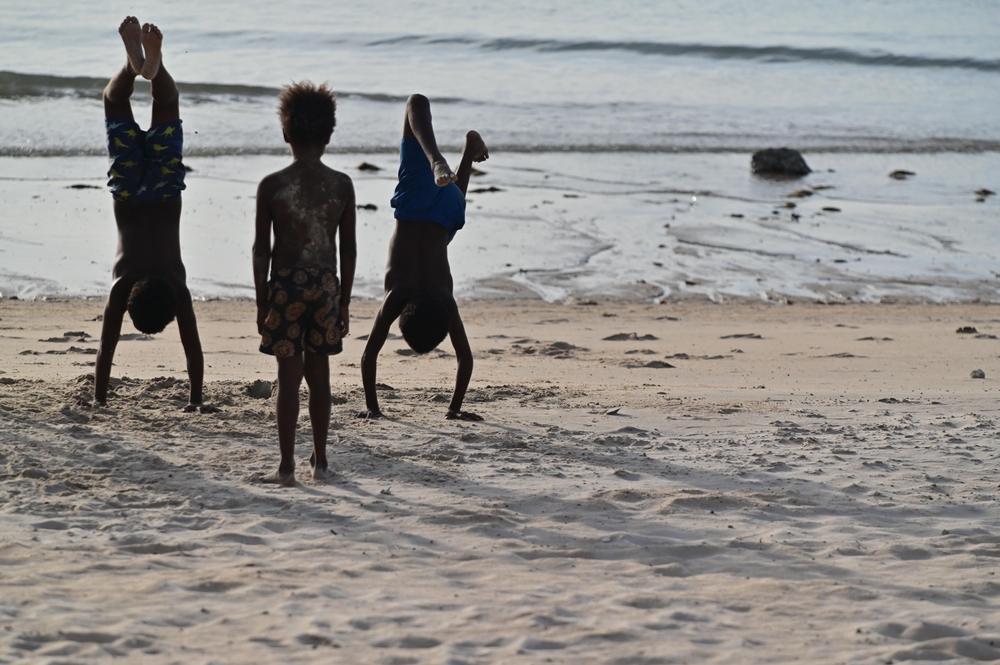In a world first, the National Aboriginal Community Controlled Health Organisation (NACCHO) has partnered with the Australian Government to establish a community-led initiative to combat acute rheumatic fever (ARF) and rheumatic heart disease (RHD) in Aboriginal and Torres Strait Islander communities throughout Australia.
In an article published today in the Medical Journal of Australia, Ms Pat Turner, NACCHO’s CEO, and Dr Dawn Casey, NACCHO’s Deputy CEO, discuss how the partnership shifts power and decision-making to Aboriginal and Torres Strait Islander community control.
Ms Turner and Dr Casey note that unprecedented levels of ARF in Aboriginal children were reported in the Medical Journal of Australia over 40 years ago, and the implementation of a comprehensive prevention system at a community level are long overdue.
“Such a system is most effectively implemented through comprehensive community controlled primary health care firmly in the hands of Aboriginal and Torres Strait Islander communities,” they wrote.
“We know what needs to be done, and we know that it can be done.”
NACCHO has been instrumental in establishing the partnership, co-designing the national governance structure, appointing an RHD Expert Working Group, and co-chairing a national Joint Advisory Committee.
“NACCHO is now responsible for dispersing over $30 million in service enhancement grants to enable Aboriginal and Torres Strait Islander communities and their community-controlled health services to address their local priorities, building on their own strengths and assigning resources to strategies they know will work,” Ms Turner and Dr Casey wrote.
More than fifteen Aboriginal Community Controlled Health Organisations (ACCHOs) have already secured funding to participate in the NACCHO program.
The initiative came about as a result of the Australian Government’s commitment to eradicate Acute Rheumatic Fever and Rheumatic Heart Disease in Australia by 2031.

What is ARF and RHD?
ARF begins as a group A streptococci infection of the throat or skin, and is most commonly found in children aged five to 14 years.
If left untreated or if repeated infections occur, an autoimmune inflammatory reaction can cause scarring of the heart valves, resulting in RHD.
Despite being preventable and largely eliminated from high income countries, Indigenous communities in Australia have some of the highest rates of RHD in the world.
More than 8 000 Aboriginal and Torres Strait Island people are living with ARF or RHD. Aboriginal and Torres Strait Islander Australians are diagnosed with RHD at a rate 15 times higher than the rate for all Australians.
ARF and RHD are entirely preventable conditions, and only occur in high income countries when the social and cultural determinants of health are not equitably addressed.
Many people living with RHD, including children, will require heart surgery. Lifelong medical check-ups are essential for every person living with RHD.
In 2020, the National Agreement on Closing the Gap, signed by all levels of government, recognised that Aboriginal and Torres Strait Islander communities are best placed to lead on the health services decisions which impact what and how services are delivered.
In 2021, NACCHO was funded to co-lead the Rheumatic Fever Strategy with the Australian Government.
Key to the new approach is community-led action that prioritises funding to the ACCHO sector to design and deliver on the ground activities supported by a local workforce.
It is estimated that the strategy will prevent 663 deaths and save the health care system $188 million.
Read the perspective in the Medical Journal of Australia

 more_vert
more_vert
It is to be hoped that this time, NACCHO’s initiative to tackle this dreadful and debilitating disease will include sufficient ongoing evaluation as to how well the programme is achieving its goals, what aspects are working, and what aspects are not working. In this way, modifying service delivery models is justifiable. For instance, there will be a need to evaluate primordial and primary prevention strategies that reduce childhood GAS infection. If they are not working then it needs to be determined why.
Attention needs to be given to medication compliance. This is not helped by the tyranny of distance nor, should it be the case, the inability to maintain the stability of those necessary antibiotic medicines needed to tackle both ARF and RHD in remote settings.
More action on screening is a must if ARF and RHD are to be eliminated among Australia’s First Nation peoples, particularly the Aboriginal children that live out on the ‘homelands’ and who migrate to those larger regional centres into overcrowded dwellings during the ‘wet’ season. In terms of screening, echocardiography via handheld devices has already proved its value around the World as far as detection goes. However, the exact nature of the protocol to be adopted and the changes necessary in the approach to this technology, when it is used for the screening of RHD, are challenges that NACCHO will need to face. If such challenges are overcome then lessons can be applied to those Indigenous communities across the World that are experiencing high incidence, duration and prevalence of ARF and RHD. Of course, not all valve disease is rheumatic!
There is a need to review the instances where RHD among Indigenous populations have been successful. The Cuban experience is one [Nordet et al. 2008, in Cardiovasc J Afr]. There is, too, a need to examine prevention programmes across the World aimed at tackling RHD. One case that comes to mind is the ‘Colours to Save Hearts’ project undertaken in Mozambique. NACCHO must apply lessons learned from other countries in its efforts to defeat RHD.
If NACCHO is to be ‘fair dinkum’ it will need to ensure the establishment of proper RHD registers and ensure that all reported and existing cases of RHD are recorded. Reducing the burden of ARF and RHD, based on sound knowledge of true rates, has to be a priority for NACCHO. For example, a national approach to RHD control could overcome the problems of five separate jurisdictional programs maintaining five separate disease registers which are structured and function separately and do not link together. Many people with RHD move across jurisdictional borders, and this makes coordination of care very difficult. Further, another task for NACCHO is to ensure that secondary prevention efforts will become more effective than they are at present.
No doubt, the involvement of Indigenous people in decision-making, design, and implementation of primary and secondary prevention programs, is mandatory to reduce the unacceptably high rates of rheumatic heart disease among AUstralia’s First Nations people.
And don’t forget tonsillectomy for those with recurrent tonsillitis (which is commonly due to strep), and for OSA due to adenotonsillar hypertrophy. Tonsillitis is not always follicular, but is commonly phlegmonous. You will not only help eliminate rheumatic fever, but also glomerulonephritis.
And while you’re at it, diagnose and treat their chronic ear disease, to prevent chronic hearing loss and consequent poor educational outcomes.
This has all been known and documented for years, but it is increasingly difficult to get antibiotic treatment for tonsillitis, or a referral for tonsillectomy when obviously indicated. And then you have to deal with the public hospital waiting list for surgery, which commonly exceeds 12 months throughout Australia, especially rural Australia.
From 2016 to 2019 I was a regular locum at an Aboriginal Medical Service in the Far-West of New South Wales. Every day I would see between two and six school age children with boils. Bacterial culture invariably grew a mix of MRSA and Streptococcus. The streptococci were undoubtedly the cause of the endemic cases of rheumatic fever. Rheumatic Fever is a notifiable disease but MRSA and streptococcal skin infections and boils are not. Public Health Units seemed uninterested or lacked the resources to devote to tackling the social and environmental determinants of rheumatic fever.
The MJA has been publishing articles about this need for at least 70 years. As an old academic cynic, I can only conclude that it is easier to write papers about rheumatic heart disease than to find the considerable resources that are needed to prevent it.
Tackling diseases of poverty, without alleviating poverty is a hard task. Best wishes.
The scourge of Strep disease and its horrendous consequences in indigenous children was highlighted and as well reported about over 50 years ago, not 40 as stated. Yes even before Whitlam.
Rigorous Public Health interventions, assiduous personal health care training, persistent supervision of daily cleanliness of children linked to a stable healthy diet within a loving family are all critical elements to eradication of this disease. Simple.
I do truly hope that this latest government attempt at a shared bureaucratic option can achieve its aim by its stated date for these poor kids.